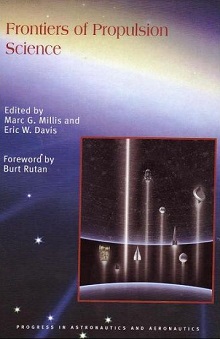An interesting article in the 30 October New Scientist discusses a new theory on how the solar system began. A team from the Arizona State University led by astronomer Jeff Hester argued last May in Science that isotopic evidence and accumulated astronomical observations argue for a violent, energetic region near high-mass stars as the birthplace of our system. Image: The Eagle Nebula, as photographed by the Hubble Space Telescope. This famous photo, often known as "The Pillars of Creation," shows giant nebular clouds being evaporated by the ferocious energy of massive stars, exposing emerging solar systems, much like our own. Credit: NASA/HST/Jeff Hester and Paul Scowen Forming near a massive, unstable star would have had interesting implications for the appearance of habitable planets. From an ASU press release: The process leaves a Sun-like star and its surrounding disk sitting in the interior of a low density cavity with a massive star close at hand. Massive stars die young,...
Promising Fusion Concepts
Fusion is often in the picture when interstellar propulsion systems are discussed, but so far we don't know how to sustain the process past the breakeven point. Ongoing research is intensive, however, and the latest in inertial confinement fusion (ICF) concepts will be examined in mid-November in Savannah, GA. That's when the American Physical Society's Division of Plasma Physics holds its 46th annual meeting. Inertial confinement fusion works by heating and compressing tiny fuel capsules with laser beams. Significant advances have been reported from the University of Rochester's Laboratory for Laser Energetics, whose researchers will present the results of their tests of OMEGA, a 60-beam laser facility that is designed for the National Ignition Facility, a fusion laser facility scheduled to be completed later in the decade. Image: Inertial confinement fusion at the Trident laser facility at Los Alamos National Laboratory. Here is a description of ICF from Los Alamos National...
The Next Close Approach
Recent analysis on more than 100,000 stars studied by the European Space Agency's Hipparcos satellite showed that about 20 percent of them within 1,000 light years are moving in unusual trajectories. Rather than circular paths around the galactic center, they're moving toward or away from the core. The cause: so-called 'density waves' that compress gas and have a hand in star formation; they also seem to be able to deflect normal stellar motions. But don't count on a stellar near miss to give us an easy way to go interstellar, at least not any time soon. The closest encounter with another star won't occur for another 1.4 million years, when Gliese 710 will pass within 1 light year of the Sun (some 70,000 AU, perhaps within the Oort Cloud of cometary debris). In any case, Gliese 710 does not appear to be one of the stars affected by galactic density waves; its motion around the galactic center seems relatively normal. Barnard's Star is approaching us as well, at a speed of 87 miles...
A Downhill Run to Darkness?
The SETI Institute's Seth Shostak has some things to say about the future of the universe in a recent posting on Space.com, referring to current observations suggesting that the rate of expansion of the cosmos is speeding up. That could make for a long, long night: After all, most stars are older than the Sun, and the stellar population boom is definitely over. The Galaxy is graying (although the actual color change is to the red). The stars are going out. In about 100 billion years, the once-brightly spangled arms of the Galaxy will be riddled with Sun-sized carbon clinkers, black holes, and quiescent neutron stars - a hundred billion mute, stellar hulks. The fun will be over, but the decay will go on. Chaotic encounters will eventually strip planets from the corpses of their erstwhile suns, and galaxies will slowly evaporate - spewing their dark and lifeless contents into the ever-expanding void. Even massive black holes will someday melt away, adding their mass to the inert and...
SMART-1 Final Course Correction
Keep an eye on ESA's SMART-1 mission, which recently completed a four-hour burn of its ion engine to correct its trajectory to the Moon. The next engine burn, lasting 4.5 days, won't occur until November 15 when the craft has reached lunar orbit. The final operational orbit will be polar elliptical, ranging from 300 to 3,000 kilometres above the Moon's surface. SMART-1 will perform a six-month survey of chemical elements on the lunar surface by way of examining various theories on how the Moon originally formed. What's interesting about SMART-1, in addition to the exotic series of spiraling orbits it is using to reach the moon, is its solar-electric propulsion system. This device uses electricity (generated from sunlight through solar panels) to accelerate xenon ions through an electric grid at huge velocity. So-called 'ion engines' like this create low thrust, but their specific impulse (ISP) is high. Their efficiency means a spacecraft can carry less fuel and be outfitted with more...

